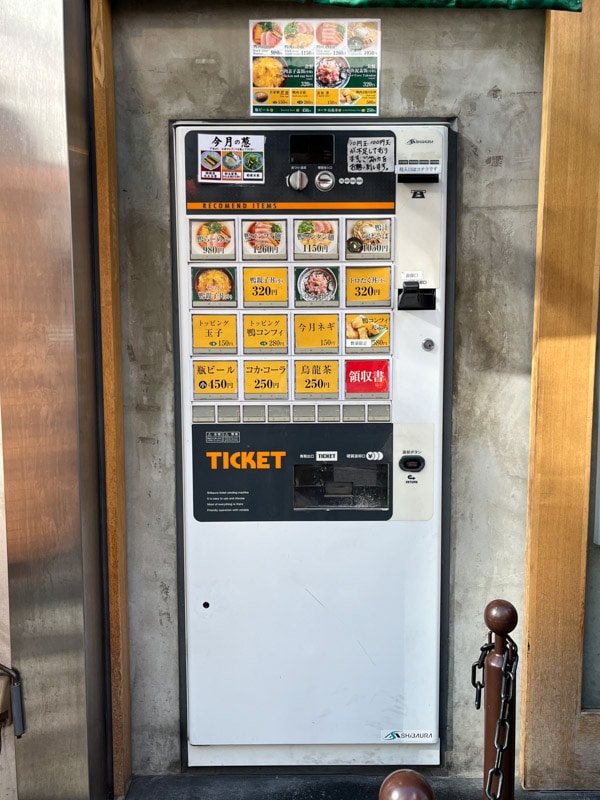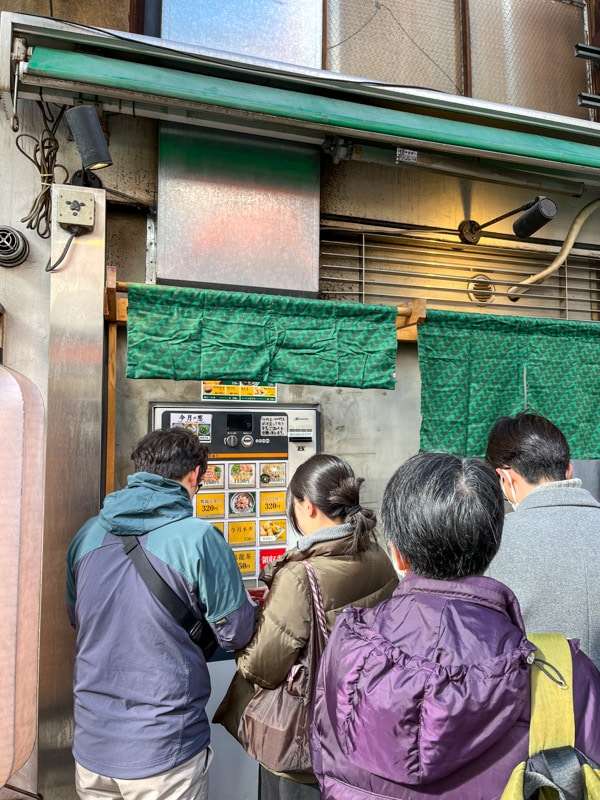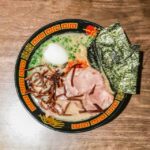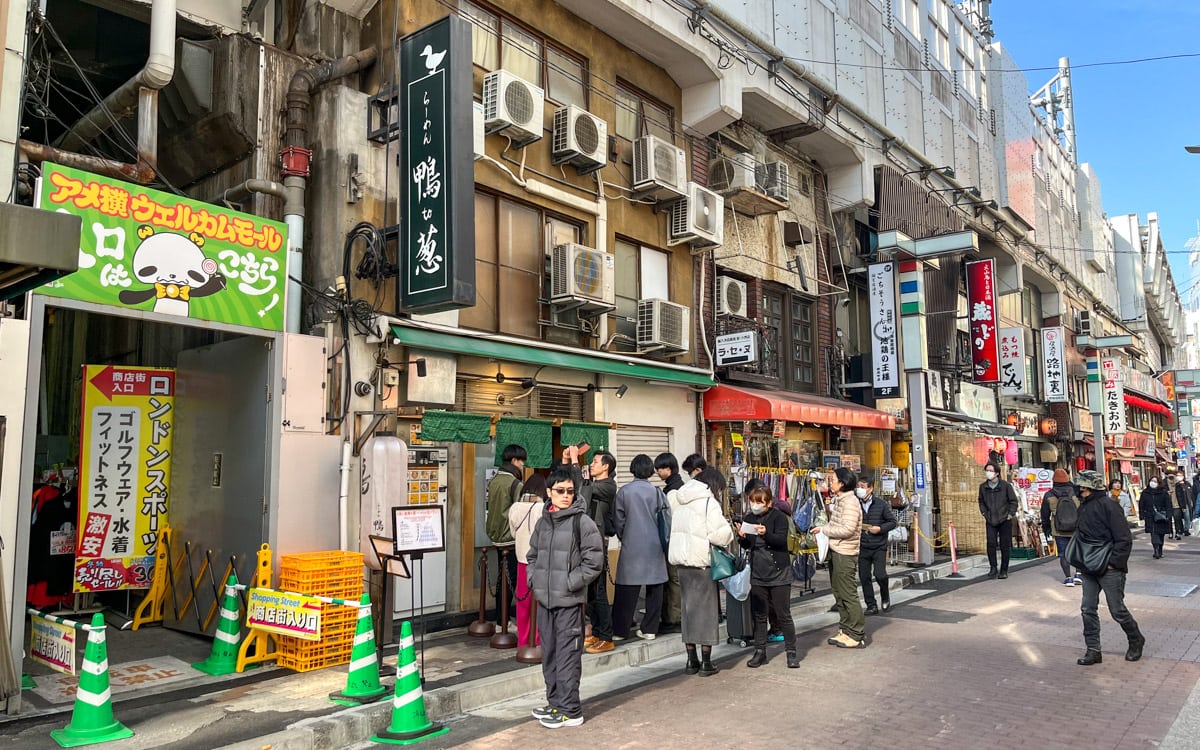
When my friend found out I was in Tokyo, he recommended I visit Kamo to Negi, a small shop near Ueno Station, famous for their duck ramen. Although I’ve had duck before and enjoyed countless bowls of ramen during my visits to Japan, I had never tried duck ramen. So, I knew it was something I had to experience for myself.
Although many ramen shops have been in business for decades, Kamo to Negi, which opened in 2016, has rapidly become a favorite. In just a few short years, it has earned a reputation for serving the best duck ramen in Tokyo.
You can always find a line at the small shop beneath the train tracks between Okachimachi Station and Ueno Station. I learned it is best to go when they open to beat the lines.
Unfortunately, I couldn’t make it until the early afternoon. So, I went expecting a line and hoping for the best. But I knew the wait would be worth it.
If you’re curious, ‘kamo’ means duck, and ‘negi’ means onion in Japanese. The name is a nod to the simple yet flavorful bowls of duck ramen served here, topped with onions.
Table of Contents
Arrival at Kamo to Negi
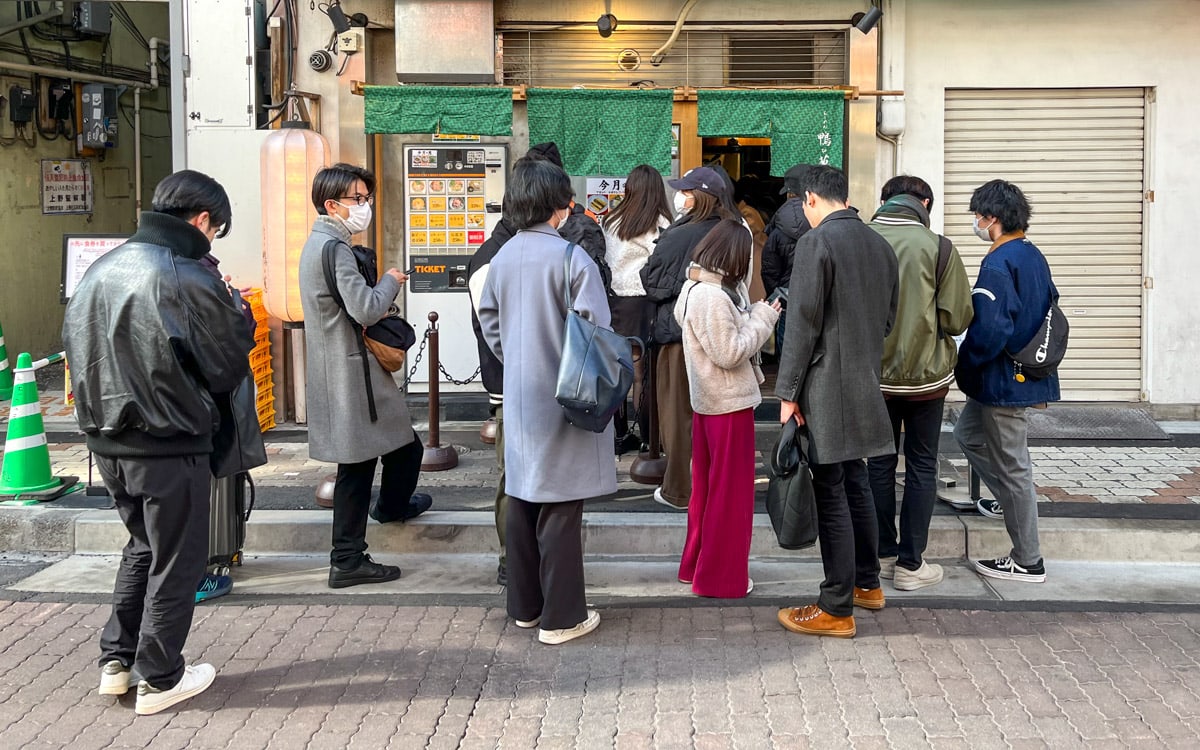
As expected, there was a line when I arrived at Kamo to Negi around 1:30 PM. I noticed two lines, one in front of the restaurant entrance and another across the street.
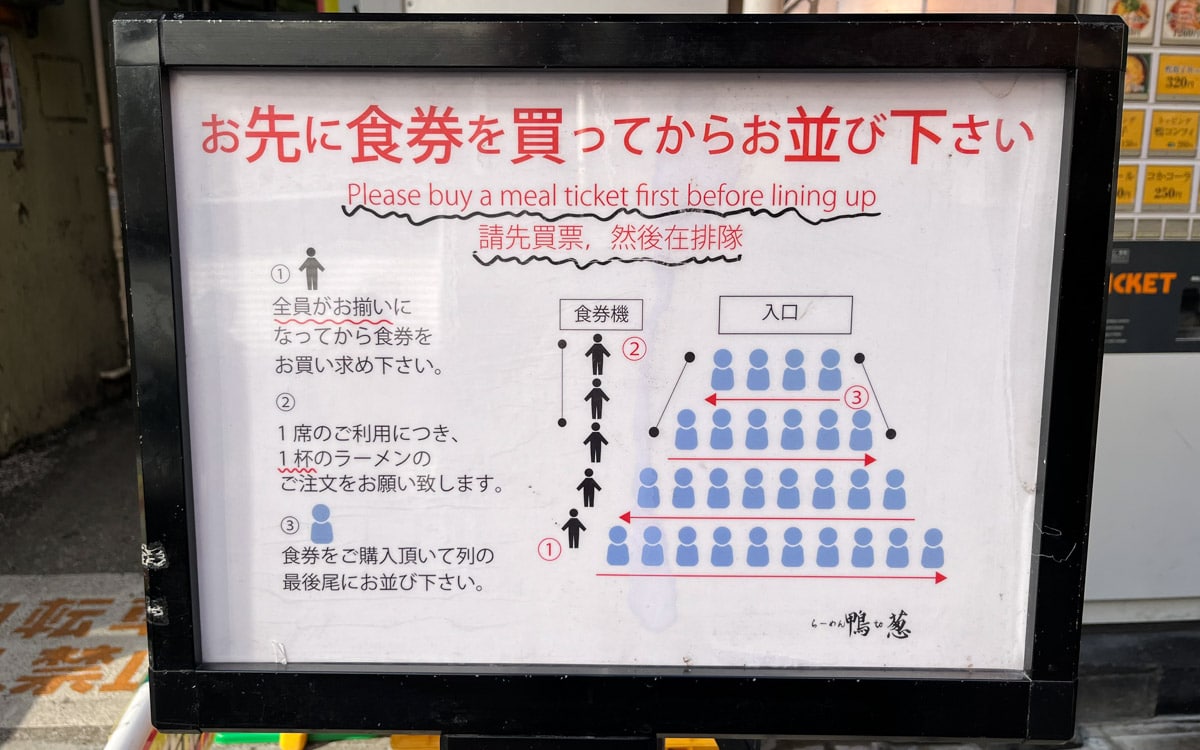
A sign to the left of the entrance said, “Please buy a meal ticket first before lining up.” It is common in Japan to order using a vending machine and then stand in line. While familiar to me, other guests who arrived after seemed confused about the process and which line to stand in.
Ordering from the Vending Machine
As mentioned before, vending machines are common at ramen shops in Japan. These machines allow customers to select and pay for their meals with cash. Tickets dispersed from the machines are then handed to the staff.
This simple yet efficient system speeds up the ordering process and eases language barriers, making it convenient for both locals and tourists.
So when I arrived, before standing in line, I walked up to the vending machine, inserted cash, selected what I wanted, and was given a ticket. Only then did I join the line.
Kamo To Negi Menu
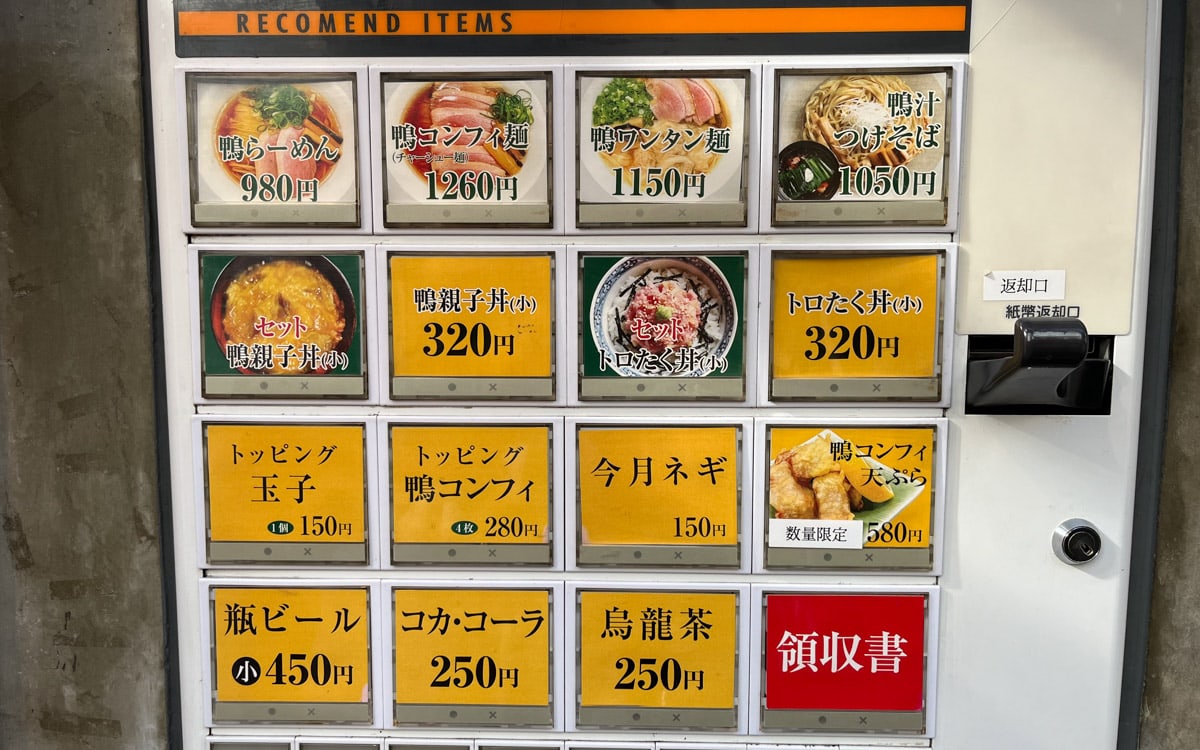
Although the vending machine options were in Japanese, the main food options had photos. The photos made ordering easy as I do not speak Japanese. And just a reminder. The machine accepted 1000, 2000, 5000, and 1000 yen bills and 10, 50, 100, and 500 yen coins. They did not accept credit cards.
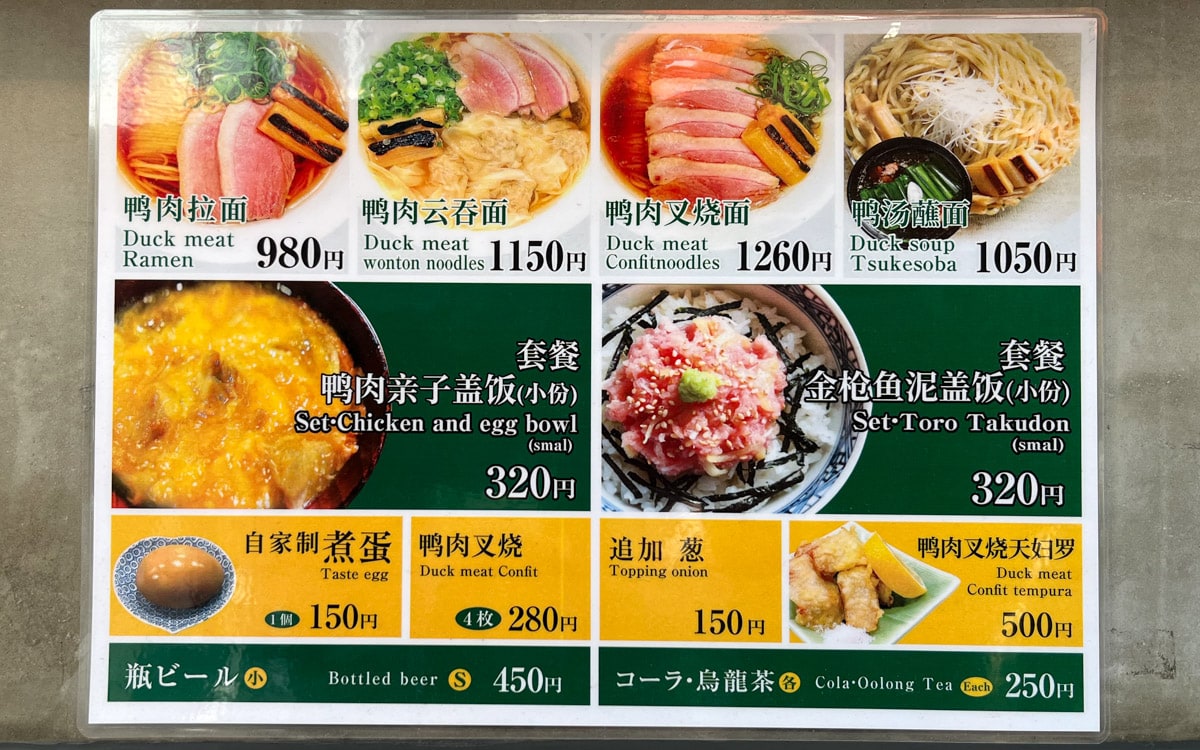
If you need more help, look for the English menu above the vending machine. Now, you can easily match the items listed in English with those displayed on the vending machine.
On the Kamo To Negi menu were a few food items, beer, and tea. Food items included, rewritten for clarity, Duck Ramen, Duck Wonton, Duck Confit Ramen, Duck Tsukesoba, Chicken and Egg Bowl Set, Toro Takudon Set, and Duck Confit Tempura.
Additional sides included an egg, duck confit, and green onions. As for drinks, you had bottled beer, cola, and tea.
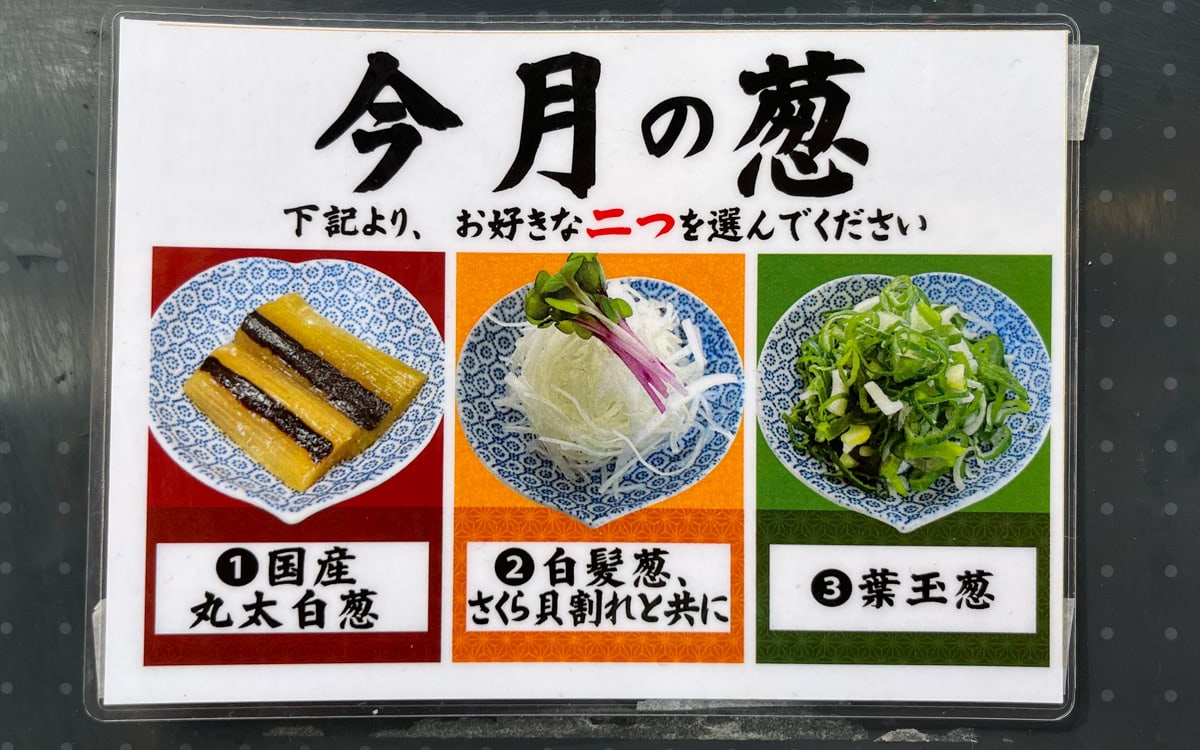
After waiting in line for 30 minutes, a staff member approached me and took my tickets. She also showed me a card with photos of three toppings: leeks, white onions, and green onions.
The staff member told me to choose two of the three toppings. I kept it simple and chose the leeks and green onions because that’s what the menu displayed.
Interior of Kamo To Negi
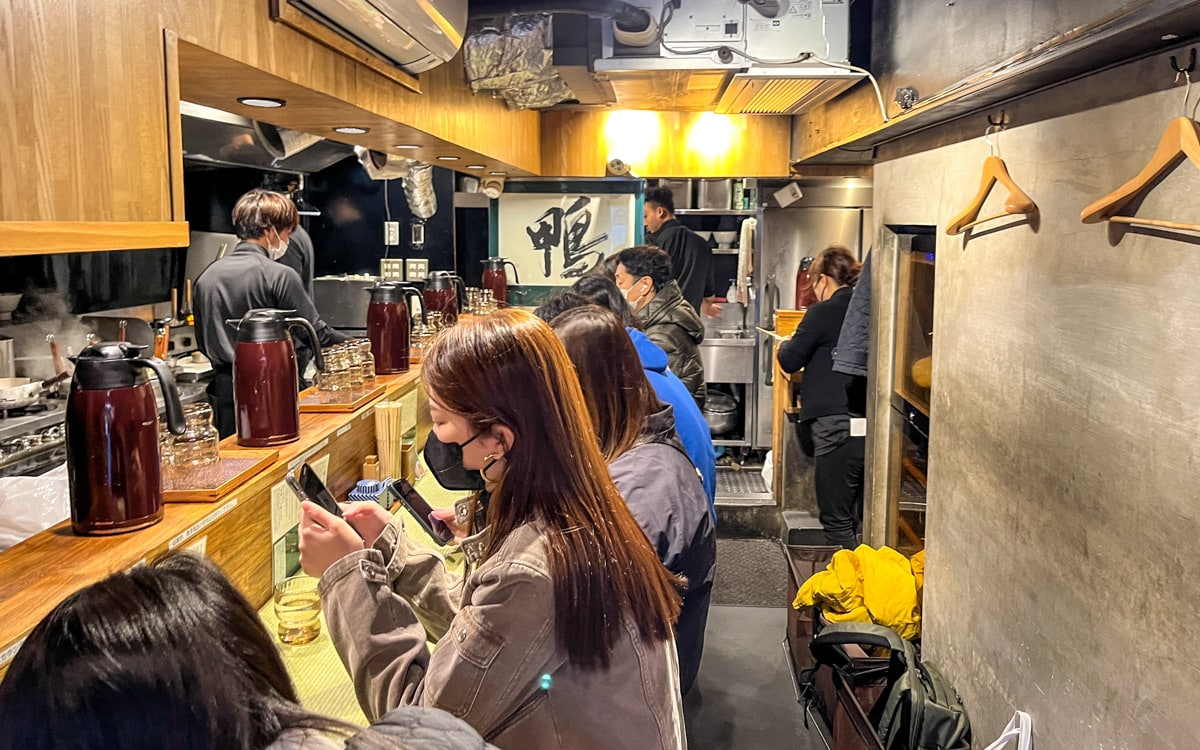
After a few more minutes, the shop’s door slid open. A friendly worker dressed in black approached me and pointed me toward my seat.
The interior of Kamo To Negi was narrow, with counter seating and a small, open kitchen. The setup was similar to the design found at ramen shops all over Japan.
The shop’s design was simple but bright, with wooden tones and exposed pipes. While the décor was simple, it was cozy. Ultimately, the focus was on the food, not the design.
In the background, there was loud music playing. I thought this was strange for a cozy ramen shop. But it all made sense when the first train passed by, shaking the entire shop. It was so loud. I knew the music was masking the sounds of the train.
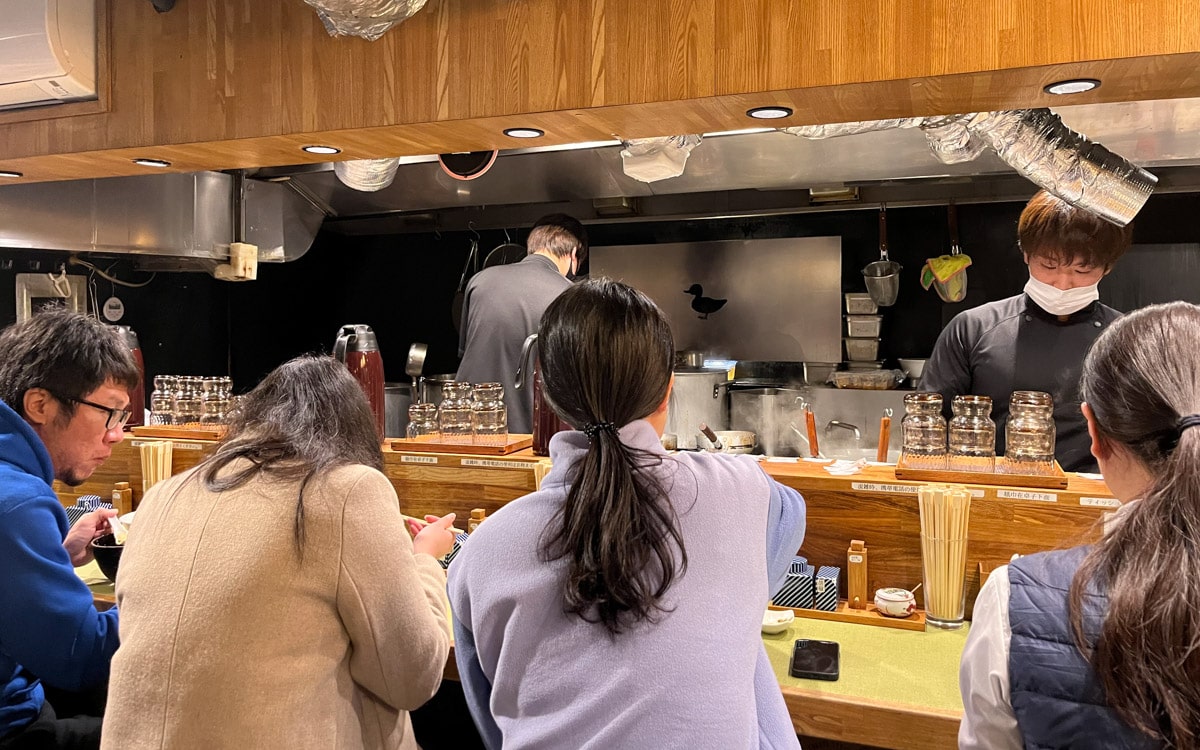
Sitting at the counter is one of my favorite things about eating at ramen shops. While space is tight, I always enjoy watching the chefs at work, especially at Kamo to Negi.
Duck Confit Ramen
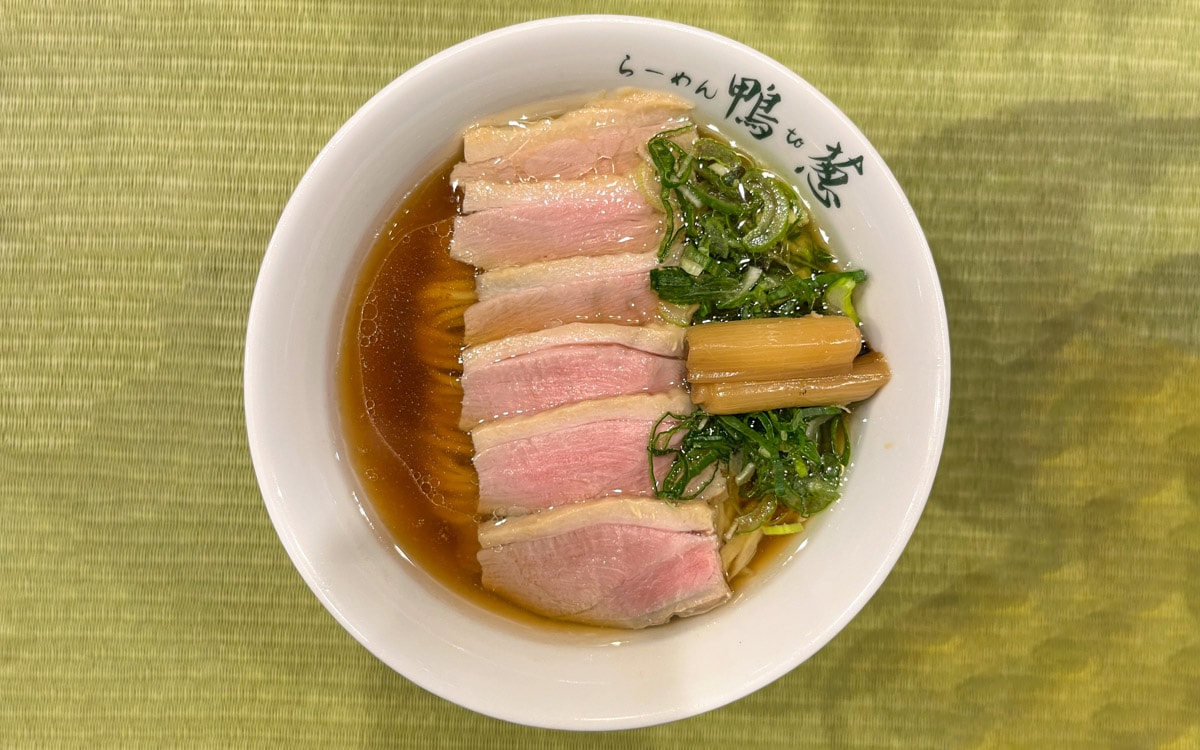
Torn between the Duck Ramen and the Duck Confit Ramen (1260 yen or about $8.36), I settled on the latter. I chose the one with more slices of duck. I couldn’t believe how beautiful the bowl looked when placed in front of me.
When I tasted the golden broth for the first time, I was blown away by how delicious and delicate it was. It was rich and salty, with a distinct flavor of duck simmered for hours.
Next, my attention went to the confit duck slices glistening under the lights. Each piece of duck was incredibly tender with a rich, savory flavor. The duck had the perfect meat-to-fat ratio, resulting in a tender texture and enjoyable bite.
Hidden underneath the duck was a large portion of noodles. These noodles were soft and bouncy and soaked up all the broth flavors. While simple, these noodles brought the bowl of ramen together.
Leeks and green onions finished off this bowl of ramen. Both added a fresh, crunchy bite to the ramen. I enjoyed how the charred leeks added a smoky, sweet flavor that complemented the richness of the broth and duck.
Service
At many ramen shops across Japan, you order from a vending machine, hand your ticket to the staff, get your bowl of ramen, quickly eat, and move on. And this was my experience at Kamo to Negi.
Because of this process, my interaction with the staff was limited. With that said, the staff ran the shop like a well-oiled machine. Everyone had a job, from managing the line to preparing food and cleaning up.
This efficient service ensured the line out front kept moving while allowing as many customers as possible to enjoy delicious bowls of ramen.
Conclusion
There wasn’t anything I did not like about my visit to Kamo to Negi. Yes, there was a line, and I had to wait about 30 minutes, but it was well worth the wait for the ramen.
The duck-infused broth of the Duck Confit Ramen was rich and salty, the sliced duck was tender, and the noodles were tender yet bouncy.
Though simple, the combination of flavors and textures makes the duck ramen at Kamo to Negi one of the best bowls of ramen in Tokyo. And I can’t wait to return to try other items on their menu.
Pros
- Rich, salty, and delicious duck-infused broth
- Tender slices of duck in each bowl
- Cozy interior
- Efficient staff
Cons
- Often a line out front
- Limited seating
- Loud with trains passing over
Address & Contact
6 Chome-4-15 Ueno, Taito City, Tokyo 110-0005, Japan
GPS Coordinates: 35.70847,139.77519
Telephone: +81 3-6803-2334
Hours
24 hours
Map
Last Updated on July 9, 2025
